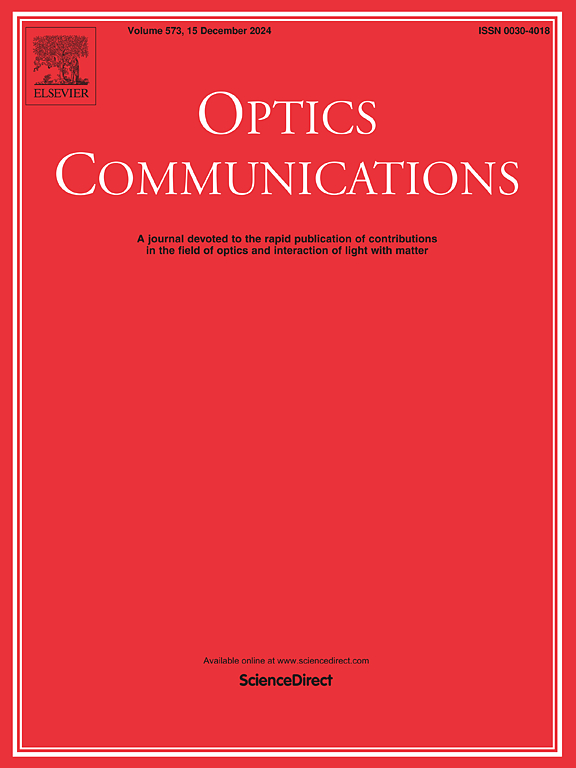Efficient manipulation of plasmonic hot spots in nanocube-based multiparticle-on-film nanocavities
IF 2.2
3区 物理与天体物理
Q2 OPTICS
引用次数: 0
Abstract
Precisely controlling the positions of hot spots in film-coupled nanoparticle aggregates has garnered significant interest in plasmon-enhanced spectroscopy, biosensing, and photocatalysis. However, the coupling between particles and metal films gives rise to complex plasmon competition and synergistic effects, making it challenging to predict the location of hot spots accurately. Here, we theoretically investigate the characteristics of plasmonic hot spots in film-coupled metal nanocubes aggregates by manipulating the symmetry of nanocubes arrangements. Regarding the symmetric system, the hot spots exhibit dipolar distributions at the ends of the nanocubes, whereas the hot spots distributions appear tilted towards one end of the nanocubes in the asymmetric system. Furthermore, efficient excitation of the array-type hot spots can be achieved under specific shell-layer thicknesses and particle-film gaps. These results establish a solid theoretical foundation for potential applications based on nanocubes-on-film nanocavities.
求助全文
约1分钟内获得全文
求助全文
来源期刊

Optics Communications
物理-光学
CiteScore
5.10
自引率
8.30%
发文量
681
审稿时长
38 days
期刊介绍:
Optics Communications invites original and timely contributions containing new results in various fields of optics and photonics. The journal considers theoretical and experimental research in areas ranging from the fundamental properties of light to technological applications. Topics covered include classical and quantum optics, optical physics and light-matter interactions, lasers, imaging, guided-wave optics and optical information processing. Manuscripts should offer clear evidence of novelty and significance. Papers concentrating on mathematical and computational issues, with limited connection to optics, are not suitable for publication in the Journal. Similarly, small technical advances, or papers concerned only with engineering applications or issues of materials science fall outside the journal scope.
 求助内容:
求助内容: 应助结果提醒方式:
应助结果提醒方式:


